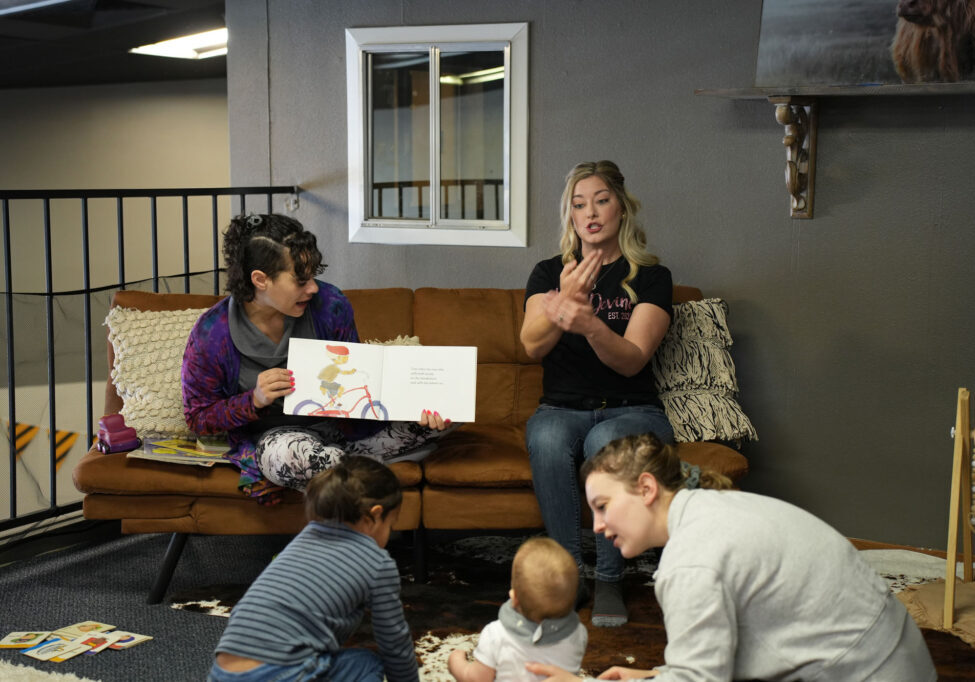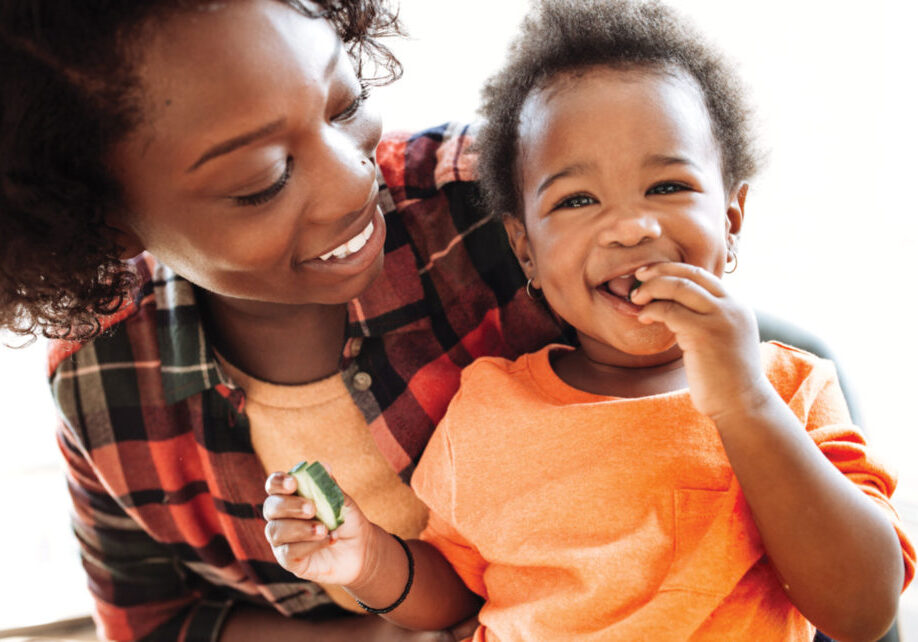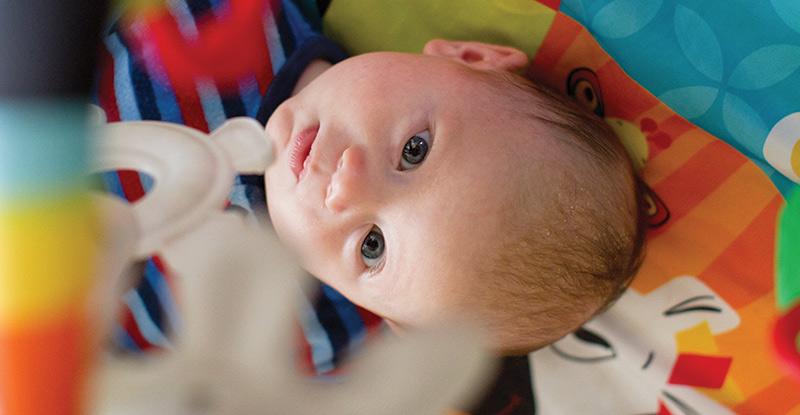Creating Balance for Babies
Babies bring joy to most families. Regardless of whether a new baby is the first-born or the third or fourth, looking at newborns and infants inspires awe. Parents want to offer their little one the best opportunity to thrive. They may not know how, and when asking family and friends, may likely get myriad pieces of advice.
Beliefs about how to best care for babies have changed throughout the years. It was once thought that picking babies up when they cried spoiled them. Later it was believed that not picking them up could cause delayed social development. Current discussions focus on the amount of stimulation babies need for optimal social, emotional, and intellectual development. The range is wide. Some believe that motivating a baby with special materials such as black and white infant stimulation cards, flashcards, and various music modalities increases positive development. Others feel a very calm, low-stimulation environment is best, especially for highly sensitive babies.
One thing experts agree on is that all babies need loving and caring parents and caregivers. They need to be held, cuddled, swaddled, fed, changed, and talked or sung to. When babies are held and looked at during feeding and when they are kept comfortable, they develop a sense of safety. When they hear common household noises and are talked to by family members, they learn to discriminate among voices and sounds. When they see motion and contrasting colors, they develop visual discernment. The textures of their diapers, clothing, blankets, and bedding develop their tactile sense. Being in nature, in social settings, and in the community helps them adjust to the larger world.
Parents can rest assured that newborns and infants receive all the environmental stimulation they need for their development from the activities of daily life. There is little scientific evidence that special stimulation leads to greater brain development.
As newborns and infants grow into babyhood, more stimulation is required. The novelty of new tastes, sounds, smells, and environments captures their interest. Astute parents begin to get a sense of timing – when their baby wants and needs greater stimulation; and pace – how quickly their baby enjoys moving from one activity to the next. Developing this parenting skill gives the greatest assurance that their baby will respond positively.
If babies are constantly stimulated with outside attention, however, they learn to rely on others for satisfaction. They do not learn the skill of entertaining themselves or the joy that comes from alone time. Downtime is needed – time to be with themselves and detach from the world around them to absorb and integrate what they have taken in through their senses.
During downtime babies get the rest they need from the bustle of their environment, and they learn to self-regulate, such as falling asleep by themselves. Some child development professionals believe that it is during downtime that the most productive learning takes place.
What are the required elements for successful downtime for babies?
- A space where the baby will not topple onto a hard floor or into pieces of furniture. Place pillows around babies who are just beginning to sit.
- Parents and caregivers should be within the baby’s visual range so that the baby can “check-in” and so the adult can be aware of the baby’s safety.
- Keep safe toys that the baby can manipulate alone within reach. These might include rattles without long handles, soft toys without small parts that can be pulled off, toys with parts that move easily, and brightly colored toys.
- Toys should be big enough that they can go into the baby’s mouth without being swallowed or choked on.
- Parents’ should be able to recognize when the baby needs to move from downtime to interaction.
What does downtime provide for a baby?
- She learns that she can entertain herself.
- She learns to make choices and learns that decisions can be changed.
- She learns to manipulate her environment.
- She develops motor skills.
- She learns that being alone can be fun.
- She learns that downtime is restorative and provides a break from the stimulation provided by others.
Babies do not consciously learn these traits; these traits grow out of the experience of having time alone. How much downtime a baby wants depends on the baby’s temperament. Some will want much more than others.
Finding the balance between stimulation and downtime can be tricky. Sensitive caregivers learn to read the cues their baby gives. When babies grow tired of being stimulated, their eyes glaze over and they seem to zone out. They may avert their eyes, turn their head away from the activity, and even fall asleep. Most babies cry when they feel overstimulated.
Babies who are ready to move from downtime to greater stimulation become agitated, cranky, or cry. These cues help parents recognize when it’s time for a change.
Providing both stimulation and downtime gives the opportunities needed for optimal social, emotional, and intellectual development. Playing with your baby provides for learning social and interactive skills. Talking with your baby starts the process of communication and language development. An environment rich in diversity and activity fosters intellectual development. Downtime allows babies to explore their environment at their own pace and to integrate what is learned. It gives babies time to discover that they are capable of entertaining themselves.
Loving and nurturing caregivers, along with an environment that provides both effective stimulation and downtime, makes for happy babies and sets the stage for success during toddlerhood and beyond.
Posted in: Birth and Toddlers, Parenting
Comment Policy: All viewpoints are welcome, but comments should remain relevant. Personal attacks, profanity, and aggressive behavior are not allowed. No spam, advertising, or promoting of products/services. Please, only use your real name and limit the amount of links submitted in your comment.
You Might Also Like...

Veg Out! – How to Get Your Kids to Eat Fruits and Vegetables
If you’ve read anything health-related in the last ten years, you know there have been all sorts of trends when it comes to acceptable eating. Dairy, soy and eggs have […]

Speaking With Babies Before They Can Talk
It’s normal for parents to eagerly wait for their baby’s first words, and those first “words” can actually happen within the first couple months of life — with the help […]

“No” Means “No”
“Can I have a piece of candy?’ My daughter asked me one morning, right after breakfast. “No, we aren’t going to have candy right now. It’s too early,” I said. […]
Special Fun for Babies and Toddlers Circle Time at Apple Blossom Baby
When Darci and James Crossin first sat down to map out a plan for their maternity and baby goods store, Chico’s Apple Blossom Baby, circle times were part of that original […]



